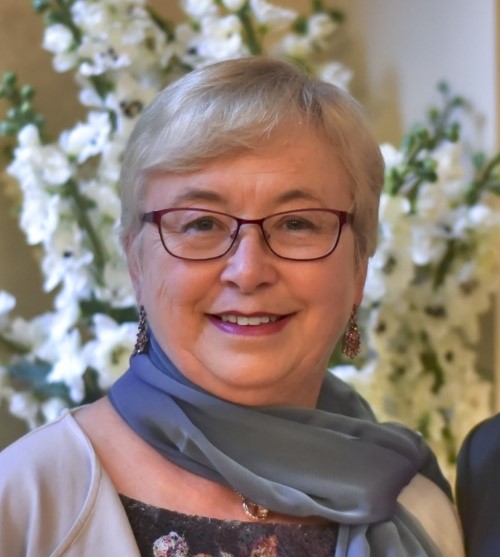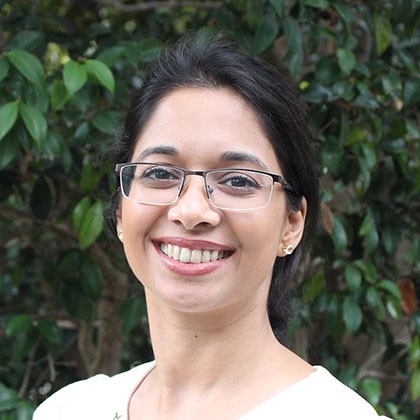"The parish, therefore, is a community called by the Holy Spirit to announce the Word of God and to bring new children to the baptismal font; gathered by her pastor, she celebrates the memorial of the Lord's passion, death and resurrection, and testifies to faith in charity, living in a permanent state of mission, so that no one misses the saving message that gives life."
 In June this year, the National Centre for Pastoral Research released the 2016 Parish Social Profiles. These profiles provide detailed demographic information about Catholic parish communities across Australia. In basic terms, they describe the people living in a parish who self-identified as Catholic in the 2016 Australian Census.
In June this year, the National Centre for Pastoral Research released the 2016 Parish Social Profiles. These profiles provide detailed demographic information about Catholic parish communities across Australia. In basic terms, they describe the people living in a parish who self-identified as Catholic in the 2016 Australian Census.
The profiles come at a time when COVID-19 continues to impact our experience of Church to an enormous extent. Amidst the turmoil, Catholics around Australia are left wondering what the future of their parish might look like. How many will return to the pews? Will the coffers continue to dry up? And will parishes ever return to the cohesive communities they once were?
Amidst the impending sense of loss, it is wise to remember Pope Francis’ words when he wrote about parishes possessing “great flexibility” through “the openness and missionary creativity of the pastor and the community”. COVID-19 might be the time when this ingenuity and adaptability is needed as never before.
But as we wait for tomorrow to reveal itself and look forward to emerging possibilities, there is no doubt that this time could be best spent in understanding our own parish communities better and finding new ways of self-renewal and growth. We are all called to a “renewal of evangelisation” that requires “new attentions and diversified pastoral proposals, so that the Word of God and the sacramental life can reach everyone, in a manner consistent with each one's state of life”.
The Parish Social Profiles are an excellent tool for learning about Catholic communities in Australia. Whether you are a parish leader, a person in ministry or just an interested parishioner, this comprehensive, easy-to-read and free resource is one that should not be missed.
One of the key features of the profiles is the information on the Catholic population living within parish boundaries and the changing patterns over the last five years. It may not come as a surprise that people within this group look quite different to those who turn up for Mass on any given Sunday. Nationally, we know the percentage of the Catholic population at Mass is about 12 per cent. It begs the question then: how well do we know the other 88 per cent of those who make up our parish?
Would you know, for example, if people in your parish are generally older or younger? Could you tell how many have arrived from overseas in the last few years and what countries they have come from? How many languages are spoken in your parish? Is there a large group of those who are elderly and live alone and might need access to sacraments? How many individuals have special needs? Are there families with children struggling to make ends meet? What about those who are single or divorced?
The answers to all these questions are contained within your Parish Social Profile. By now, every parish would have received a hard-copy of their own customised profile. The profiles are also freely available online.
 Parish priests and other pastoral leaders will find great value in this information to tailor their ministry to meet the changing needs of their communities. One example of this material being put to good use comes from Fr Troy Bobbin at Queanbeyan Parish in New South Wales. Fr Troy relies heavily on the statistical data to help him track personnel and general resources to carry out parish initiatives.
Parish priests and other pastoral leaders will find great value in this information to tailor their ministry to meet the changing needs of their communities. One example of this material being put to good use comes from Fr Troy Bobbin at Queanbeyan Parish in New South Wales. Fr Troy relies heavily on the statistical data to help him track personnel and general resources to carry out parish initiatives.
“We have a large multicultural background of 41 countries represented in our parish. With the three largest countries being Italy, Philippines and India, this is why our Sunday afternoon Mass is so popular with our Indian and Filipino brothers and sisters,” he said.
“This helps us to understand their culture and helps us work out how to explain to them why we do the things we do — for example, how to meet others in the parish and to encourage them to join the financial program.
“Other data that helps our leadership team is the number of Catholics that have changed address in the previous five years. In our case, there are 3,865 Catholics who have moved house — whether it is out of our parish boundary or not, it helps us keep records straight. There is much more information to be gained and it is referred to regularly, to help us form new strategies and programs such as marriage preparation, and care for our elderly families.”
The data on attendance at educational institutions are another great feature of the profiles. This section provides information on the number of Catholic students in the parish attending government, Catholic and other non-government schools. As Fr Troy explains, “The profile tells me, I have 48.2 per cent Catholic primary-aged children attending our five government schools and that we have 32.5 per cent non-Catholic school children in our Catholic school. The same information applies for secondary students. This helps me ascertain how many catechists we need to run our sacramental preparation program and to organise catechists for our government schools.”
The Parish Social Profiles are also a handy resource for Catholic dioceses to help them with their planning needs. Sophy Morley, the Diocesan Coordinator for Liturgy and Pastoral Ministry in the Diocese of Sale, has used the material from the social profiles extensively in previous years.
“The data is set out very well in the reports, with easy-to-read graphs and useful information that can assist a diocese and its parishes in their pastoral initiatives,” she said.
Pope Francis reminds us that plans for evangelisation and mission must always consider “those who actually live within the territory”.
“Every plan must be situated within the lived experience of a community and implanted in it without causing harm, with a necessary phase of prior consultation, and of progressive implementation and verification.”
Sophy also uses the profiles to understand the unique situation and needs of each parish community.
“The parish profiles provide a solid foundation for gaining a better understanding of the communities that we serve. For example, being aware of the percentage of people who have come from overseas and for whom English might be their second language, knowing about the people who identify as Indigenous, or getting statistics on the makeup of families, their education and socio-economic situation, can help us shape our pastoral response and outreach.”
 On recently reviewing the statistics for her diocese, Sophy was quite surprised to find how mobile families are. This made her realise, “that we can’t assume that we know all the Catholics, and where they live anymore”.
On recently reviewing the statistics for her diocese, Sophy was quite surprised to find how mobile families are. This made her realise, “that we can’t assume that we know all the Catholics, and where they live anymore”.
“It also means that our communities continue to change and therefore, it is always an opportunity to be pastorally active in seeking out new arrivals. Also, the generalisation that all the Catholics in many of the parishes are ‘old’, is actually unfounded when looking at the evidence. In reality, Sale Diocese has several parishes where the median age is around 36 years.”
Apart from just Catholics, the Parish Social Profiles also report the religious affiliation of all people within the parish boundaries. This invites parishes to think about their involvement in ecumenical and interfaith activities and programs, and their relationships with people who report that they have no religion.
As Sophy observes, “What we have to remember is that parishes don’t exist just for the people in the pews. We are called to serve all God’s people. And the best way to begin to do that is to know more about the community that we are called to serve. We are all called to be agents of Christ’s mission and that is not restricted to those whom we worship with on Sunday. Mission must take us beyond the confines of our churches and into the wider community.”
Put simply, Sophy believes parishes are wise to regard the Parish Social Profiles as an important tool for their work of evangelisation and mission.
The next Australian Census will be held in 2021. New parish-level data will only be available a few years after that. As parishes and dioceses cope with the changes emerging during COVID-19 and begin planning for the years ahead, the 2016 Parish Social Profiles will continue to remain a useful tool in measuring the changing patterns of individuals and families.
Some key questions that parishes are invited to reflect on include: How might this crisis impact families and their choice of sending their children to Catholic schools? What changes might occur in the occupational status of Catholics and their availability to be involved in pastoral ministry and other activities? Will the parish see rising numbers of families under stress to meet mortgage repayments, resulting in a greater strain on parish resources?
But there is much reason for hope, too. What further opportunities for mission may emerge from COVID-19, giving rise to new forms of accompaniment and opportunities for building relationships with people in the community? As parishes are called to “go out of themselves … in a spirit of communion and collaboration, of encounter and closeness, of mercy and solicitude for the proclamation of the Gospel”, information from the 2016 Parish Social Profiles offer fresh insights for such pastoral initiatives.
 The 2016 Parish Social Profiles can be viewed online or downloaded for printing at: https://ncpr.catholic.org.au/2016-parish-social-profiles/
The 2016 Parish Social Profiles can be viewed online or downloaded for printing at: https://ncpr.catholic.org.au/2016-parish-social-profiles/
Diocesan Social Profiles and a national profile are also available on the website. For more information, contact the National Centre for Pastoral Research This email address is being protected from spambots. You need JavaScript enabled to view it.
Words:
Dr Trudy Dantis is the Director of the National Centre for Pastoral Research
Images:
Trudy Dantis, Sophy Morley, Fr Troy Bobbin
References:
1 Pope Francis, The pastoral conversion of the parish community in the service of the evangelising mission of the Church, 29.
2 Pope Francis, Evangelii Gaudium, 26.
3 Pope Francis, The pastoral conversion of the parish community, 18.
4 National Centre for Pastoral Research. “2016 National Count of Attendance—National Summary” Pastoral Research Online, Issue 44, April 2019.
5 Pope Francis, The pastoral conversion of the parish community, 36.



